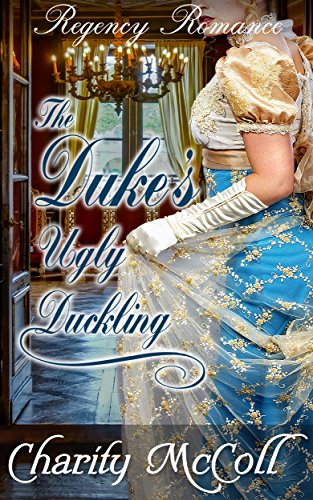The Ugly Duckling
This richly illustrated series of retold fairy tales for children aged 5-12 years old will bring an extra dimension to your English teaching. With listening, speaking, reading, writing, and drama activities, Classic Tales graded readers make it easy for you to create complete language lessons around a popular and engaging traditional tale.Follow the adventures of the famous duckling. Why is he big, strange, and ugly?..
A Timeless Tale of Transformation and Acceptance
Hans Christian Andersen's "The Ugly Duckling" is a classic fairytale that continues to resonate with readers of all ages. This seemingly simple story, with its themes of transformation and acceptance, offers a powerful message that transcends time and culture.
The Power of Transformation:
The central narrative of the story revolves around the transformation of the titular duckling, born different from his siblings. The story beautifully portrays the struggles and hardships faced by the "ugly duckling" as he is ostracized and rejected by his family and community. However, the story ultimately celebrates his transformation into a beautiful swan, highlighting the potential for change and growth within each individual.
Beyond Appearances:
"The Ugly Duckling" teaches valuable lessons about the importance of looking beyond appearances. The story emphasizes that true beauty lies not in physical characteristics but in one's inner qualities and character. Through the protagonist's journey, readers are encouraged to embrace their own unique qualities and not succumb to societal pressures of conformity.
Acceptance and Empathy:
The story also touches upon the importance of acceptance and empathy. The protagonist experiences harsh rejection and isolation due to his perceived difference. However, he eventually finds acceptance and belonging among his true peers. This message of acceptance encourages tolerance and understanding for those who seem different from ourselves.
Strengths:
- Timeless themes: The story deals with universal themes of transformation, acceptance, and self-discovery, making it relevant across generations.
- Simple yet powerful writing: Andersen's writing is clear and concise, making the story accessible to readers of all ages and backgrounds.
- Enduring characters: The protagonist's journey of struggle and ultimate triumph evokes empathy and inspires readers.
- Universally appealing illustrations: Many editions of the book feature beautiful illustrations that enhance the storytelling and capture the emotional essence of the tale.
Weaknesses:
- Potential for misinterpretation: The story's focus on physical transformation may be misinterpreted as promoting superficial beauty standards.
- Limited character development: The focus on the protagonist's physical appearance overshadows the development of other characters.
Overall Impression:
"The Ugly Duckling" remains a timeless classic that continues to offer valuable lessons about self-acceptance, inner beauty, and the importance of looking beyond appearances. While some aspects might require careful discussion with younger readers, the story's core message of transformation and acceptance resonates deeply and holds the power to inspire and uplift readers of all ages.
Recommendation: Highly recommended for readers of all ages, particularly children. This timeless tale is a valuable addition to any home library and can serve as a springboard for discussions about self-acceptance, empathy, and the importance of inner beauty.
How can you read this book?
Click these simple buttons to read this book today.
You may like these books..

|

|

|
Sue Arengo, Author ![]()
A Creative Force in Literature and Art
Sue Arengo is a multifaceted artist and author whose creative journey has left a significant mark on both the literary and artistic worlds. Her dedication to crafting engaging stories and vibrant artworks has made her a respected figure in the realms of literature and visual arts.
Sue Arengo's academic prowess shines through her educational background, as she holds a First-Class (Hons) degree in Humanities. Her passion for literature and storytelling became evident in her extensive career, which spanned over two decades as a freelance author for Oxford University Press. During this remarkable period, she focused on crafting fiction specifically designed for children and young adults learning English as a foreign language.
Among her literary achievements, Sue Arengo is renowned for creating captivating original stories like "Baby Robot" and "Archie's Sweet Shop." Her ability to weave imaginative narratives that engage young readers has earned her a well-deserved reputation as a gifted storyteller.
One of her most significant accomplishments is the multi-award-winning series "Classic Tales." In this endeavour, Sue undertook the task of retelling traditional fairy tales, making them accessible and engaging for learners of English around the world. This series, now in its second edition, remains in print, continuing to inspire and educate young readers.
Beyond her literary pursuits, Sue Arengo has also ventured into the world of visual arts. Under the pseudonym "Kisa," she has established herself as a self-taught artist known for her use of top-grade oil paints. Her artistic creations are characterized by their vivid colours, imaginative themes, and visionary compositions. Sue has exhibited her artwork, with one notable exhibition hosted at The New Room cafe at John Wesley's Methodist Chapel in Broadmead, Bristol.
One of Sue Arengo's recent literary endeavours, "Lord of the Meadow," is a fairy story designed to captivate children worldwide. Remarkably, she took on the additional role of illustrating the story herself, using oils for her artwork. Set in the idyllic backdrop of an English summer meadow, "Lord of the Meadow" is a lyrical, amusing, and uplifting tale that invites readers to immerse themselves in its enchanting world.
Sue Arengo's journey as an author and artist is a testament to her boundless creativity and commitment to nurturing young minds through literature and visual arts. Her legacy continues to inspire generations of readers and art enthusiasts, making her a cherished contributor to both the written word and the realm of visual expression.



Comments